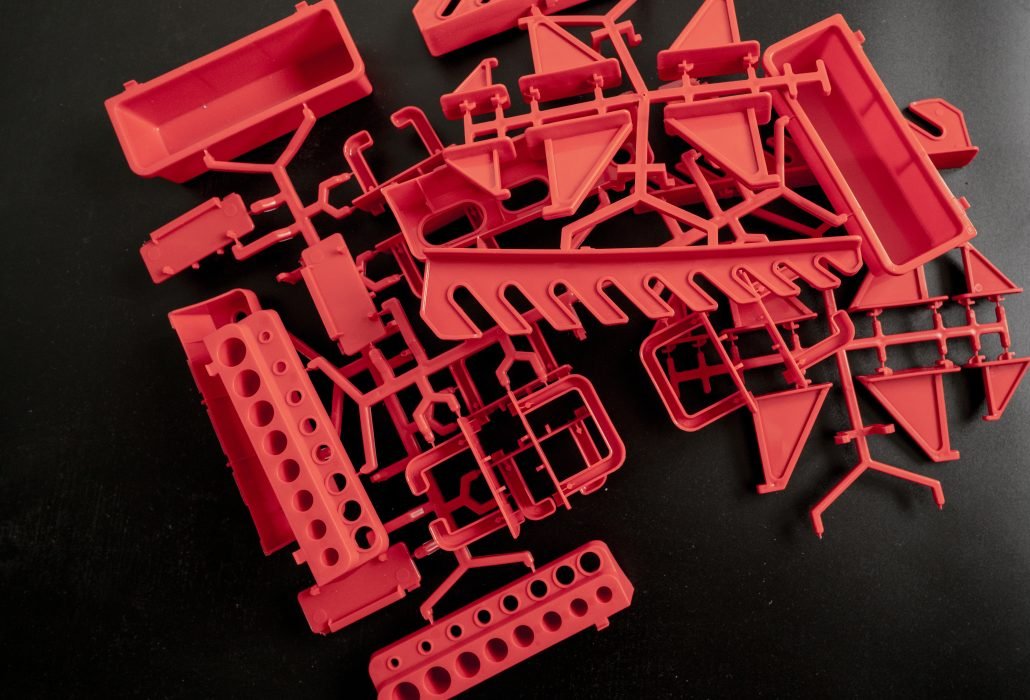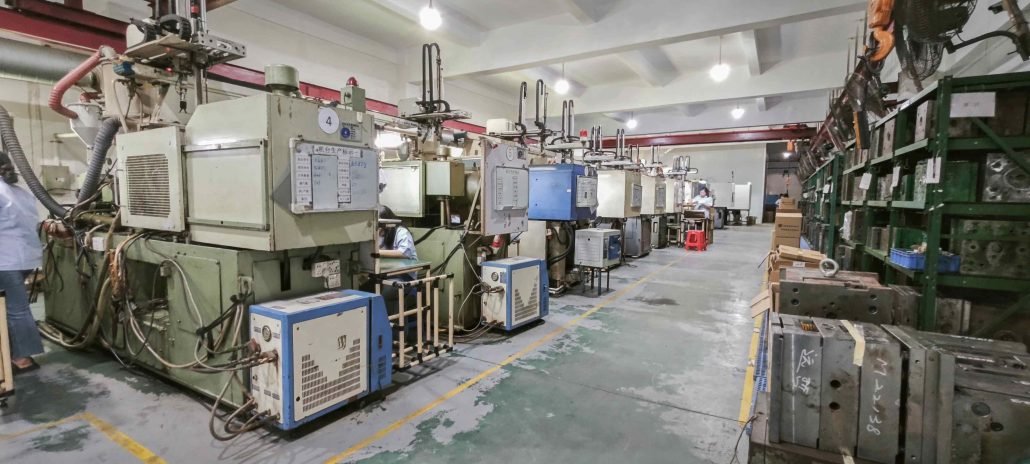Are you interested in learning about injection molding? If you are just starting out in this field, let me offer you a warm welcome. As a professional in the custom injection molding service industry, I can tell you that this manufacturing technique is fascinating and precise.
From small parts to larger ones, injection molding has become the preferred method for creating complex shapes and intricate designs. But what exactly is injection molding and how does it work? Let’s dive in.
Injection Molding Terminology
As a highly precise and widely used manufacturing process, injection molding has an extensive vocabulary. Understanding the terminology associated with injection molding is essential for manufacturers, product designers, and entrepreneurs seeking to develop and produce complex plastic parts and products.
In this comprehensive guide, we delve into the most critical injection molding terms you need to know, from basic concepts to industry jargon. Whether you’re new to the field or an accomplished professional, this article will provide you with a thorough understanding of injection molding terminology.

Basic Terminology:
Injection molding: The process of heating and injecting molten material into a mold cavity to create a solidified part or product.
Mold: The tool into which molten material is injected to create a specific shape or design.
Runner: A channel in the mold that delivers molten material to the cavities.
Cavity: The portion of the mold where the molten material flows and takes the desired shape.
Machine: The tool used in injection molding to heat and inject molten material.
Plastic Material Terminology:
Resin: The raw material that is melted and injected into the mold to create the final product.
Thermoplastic: A type of resin that becomes soft when heated and regains its original shape when cooled.
Thermoset: A type of resin that hardens permanently when heated and cannot be reused.
Additives: Ingredients added to the resin to enhance its properties, such as colorants, UV stabilizers, or reinforcing agents.
Industry Jargon:
Flash: Excess material around the edge of the part caused by overfilling or incomplete mold closure.
Warpage: Distortion or deformation of the part caused by uneven cooling of the plastic.
Gate: An opening in the mold that allows molten material to enter the cavity.
Knit line: A mark on the part that results from the joining of two or more flows of molten material.
Hot runner: A system in which the molten material is kept hot within the mold so that it does not cool down and solidify.
Cavitation: The number of cavities in a mold.
By understanding the terminology associated with injection molding, you can communicate effectively with suppliers, manufacturers, and other professionals in the industry. With this knowledge, you can optimize your product design, production process, and final product quality. Get in touch with our team to learn more about injection molding terminology or to explore our injection molding services.
Injection molding is an essential and highly versatile manufacturing technique that involves the creation of complex parts using thermoplastics or thermosetting materials. This technique has become increasingly popular due to its precision, speed, consistency, and ability to create large quantities of products.

Injection Molding Equipment
The injection molding process begins with a hopper that feeds the raw material into a heated barrel. The barrel melts and mixes the material into a liquid state that is injected into a mold. The mold is then cooled to harden the material and form the desired shape.
To achieve optimal results, it is crucial to invest in the right injection molding equipment that can handle different materials, volumes, and complexities. Here are some of the key factors to consider when selecting the right injection molding equipment:
1.Clamping force
The clamping force refers to the amount of force that is required to hold the two halves of the mold together during the injection molding process. This force largely depends on the size and complexity of the part being produced.
2.Injection capacity
The injection capacity refers to the maximum amount of material that can be injected into the mold at once. It is directly proportional to the size of the shot barrel, which determines the volume of material that can be heated and melted.
3.Mold size
The mold size refers to the maximum dimensions of the part that can be produced with a given injection molding machine. It is a crucial factor to consider, particularly when dealing with large or complex parts.
4.Material compatibility
The injection molding equipment should be compatible with the specific materials that will be used in the manufacturing process. Some materials require high temperatures or specialized equipment to process effectively.
5.Production volume
The production volume refers to the number of parts that need to be produced within a given timeframe. It is an essential factor to consider when selecting the right injection molding equipment, as some machines are more efficient for high-volume production.
Investing in high-quality injection molding equipment is a critical factor for any business that wants to achieve high-quality products, efficiency, and cost-effectiveness. The right equipment can significantly improve the manufacturing process, speed up production, reduce defects, and enhance product quality.
In conclusion, selecting the right injection molding equipment is a critical factor in achieving optimal production results. Apart from the considerations outlined above, it is crucial to work with reputable suppliers that offer robust quality assurance and technical support to guarantee the longevity and reliability of the equipment.

Injection molding Techniques
When it comes to creating products, manufacturing is a crucial aspect that cannot be overlooked. Whether you are making components for the automotive industry or toys for children, choosing the right manufacturing technique can have a significant impact on the final product’s quality, durability, and cost. In this article, we will delve into injection molding techniques, a highly efficient and scalable manufacturing process for creating complex products with high accuracy and consistency.
What is Injection Molding?
Injection molding is a process that involves heating plastic resin pellets until they are molten and then injecting them into a mold. The mold is then cooled, allowing the plastic to take on the shape of the mold. This process is highly popular in manufacturing different products, from medical devices to automotive parts and consumer products.
What are the Benefits of Injection Molding?
There are several benefits to using injection molding in your manufacturing process, including:
1.High Accuracy and Consistency
Injection molding allows for the creation of complex shapes with high accuracy and consistency. This is because the mold is a precise replica of the final product and tolerances can be controlled within a fraction of a millimeter.
2.Scalability
Injection molding is highly scalable, enabling the creation of small test batches or mass production of thousands of units with the same quality and consistency.
3.Efficiency
Injection molding is a highly efficient process. The molds can be made in a range of sizes and shapes, allowing the manufacturing process to be tailored to the product’s specific needs.
4.Cost-Effective
Injection molding is a cost-effective technique for mass-producing products. The initial investment in creating the mold may be significant, but once the mold is created, the cost-per-unit can be significantly reduced.
What Types of Injection Molding Techniques are There?
There are several types of injection molding techniques, including:
1.Thermoplastic Injection Molding
Thermoplastic injection molding involves heating the plastic pellets until they are molten and then injecting them into a mold. This technique is suitable for products that require complex shapes and features.
2.Structural Foam Injection Molding
Structural foam injection molding is best suited for large, thick-walled products that require additional strength. In this process, a chemical blowing agent is injected into the plastic resin, creating a foam that fills the mold and provides additional structural support.
3.Gas-Assist Injection Molding
Gas-assist injection molding is similar to thermoplastic injection molding, but a small amount of gas is injected into the plastic as it is injected into the mold. This creates pockets of gas within the plastic, reducing the amount of material required and allowing for the creation of complex shapes.
4.Liquid Silicone Injection Molding
Liquid silicone injection molding is a specialized technique used to create products that require medical-grade silicone. During this process, two components of silicone are mixed, injected into a mold, and then cured to form the final product.
Injection molding is a highly efficient and scalable manufacturing process that can revolutionize your product manufacturing. With several techniques available and a broad range of applications, it is an excellent option for small and large-batch productions alike. By choosing the right technique and working with a reputable supplier, you can create high-quality products at a cost-effective price. If you are considering injection molding for your next manufacturing project, we encourage you to explore the possibilities and see how you can benefit from this innovative technique.

How to Get Started with Injection Molding Services
Getting started with injection molding services can be intimidating, but it doesn’t have to be. Here are some steps that you can take to get started:
1.Choose a custom injection molding service: Look for a company that specializes in custom injection molding services. This will ensure that your plastic parts are made to your exact specifications.
2.Get a quote: Contact the injection molding service and request a quote. You’ll need to provide them with the part design and quantity needed.
3.Review the quote: Carefully review the quote and make sure that it includes all of the costs associated with injection molding, such as mold production, material costs, and labor costs.
4.Place an order: If you’re satisfied with the quote and the injection molding service, place your order and provide them with the necessary information to get started.
Conclusion
As you can see, injection molding is an excellent manufacturing process for producing high-quality, high-volume plastic parts. Whether you’re looking to create a new product or expand your production capabilities, custom injection molding services can help you achieve your goals. With the right injection molding service, you can create plastic parts that are cost-effective, consistent in quality, and environmentally friendly. So why not get started today?

